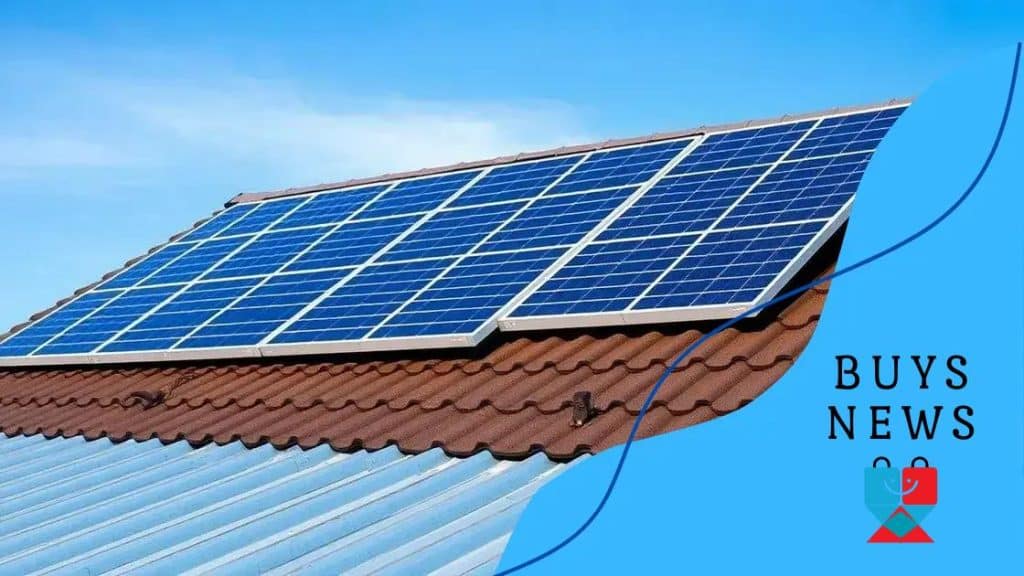Renewable energy subsidies: how they can boost your savings

Renewable energy subsidies significantly lower the costs of adopting sustainable energy solutions, providing financial incentives for individuals and businesses to invest in technologies like solar and wind energy.
Renewable energy subsidies are changing the landscape of energy consumption, making it easier for households and businesses to adopt sustainable practices. Have you ever wondered how these financial incentives can improve your savings and support a greener planet?
Understanding renewable energy subsidies
Understanding renewable energy subsidies is essential for anyone looking to benefit from the transition to sustainable energy sources. These subsidies help reduce the costs related to renewable energy technologies, making them more accessible to individuals and businesses alike.
In this section, we will explore the different types of subsidies available and how they can significantly affect your energy bills.
Types of Renewable Energy Subsidies
Various subsidies exist to support the adoption of renewable energy. These can come from government bodies, non-profit organizations, or even private investments.
- Tax credits: These reduce the amount of tax you owe, making it cheaper to install solar panels or wind turbines.
- Grants: Many programs offer straightforward financial assistance for installing renewable energy systems.
- Feed-in tariffs: These provide long-term contracts to producers of renewable energy, guaranteeing a fixed price for the electricity they generate.
- Loans and financing opportunities: Special rates allow individuals and businesses to finance renewable energy projects at lower interest rates.
Receiving these subsidies can lead to long-term savings on energy costs. With lower upfront costs, the adoption of renewable energy technologies becomes more attractive. If you’re considering making the switch, understanding the available options is critical.
Furthermore, the impact of these subsidies extends beyond just financial savings. They also promote a cleaner environment by encouraging the use of renewable energy sources. By participating in these programs, you contribute to reducing greenhouse gas emissions and fostering sustainable energy practices.
Many states and countries are also developing new subsidy programs as part of their commitment to combating climate change. Staying informed about these opportunities can help you make the best choices for your energy needs.
Exploring the world of renewable energy subsidies can unveil numerous possibilities for you. With the right knowledge, you can capitalize on these incentives and take an active role in shaping a more sustainable future.
Types of renewable energy subsidies available
There are many types of renewable energy subsidies available to encourage the use of sustainable resources. Each type aims to ease the financial burden of adopting renewable technologies.
These incentives can come in various forms, making it essential to understand what options are out there to help you save money while going green.
Tax Credits
Tax credits are one of the most common forms of subsidies. They reduce the amount of tax you need to pay, which can significantly lower the cost of purchasing and installing solar panels or other renewable systems.
Grants
Another option is grants. These funds are given to you to help with the cost of renewable energy installations. Unlike loans, you do not have to pay them back. This makes them a valuable resource for many individuals and businesses.
Feed-in Tariffs
With feed-in tariffs, energy producers receive a fixed payment for the electricity they generate. This encourages more people to invest in renewable technologies, knowing they will receive financial compensation.
Loans and Financing Opportunities
Lastly, there are loans specifically designed for renewable energy projects. These often come with lower interest rates, making it easier for you to afford a renewable energy system.
Understanding these types of subsidies helps you make informed decisions on energy investments. By utilizing these financial incentives, you can reduce your overall energy costs and contribute positively to the environment.
How subsidies can lower your energy bills

Understanding how subsidies can lower your energy bills is crucial for anyone interested in renewable energy. These financial incentives make it easier to adopt eco-friendly solutions while also saving money.
When you take advantage of energy subsidies, you can significantly reduce the upfront costs associated with installing renewable energy systems.
Immediate Savings
One of the main benefits of subsidies is that they provide immediate financial relief. For example, if you qualify for a tax credit, you can save money right away. This means that you can have a more affordable installation process for things like solar panels or wind turbines.
Long-Term Financial Benefits
In addition to immediate savings, subsidies often lead to lower monthly energy bills. With a renewable energy system, you can generate your own power, which reduces your reliance on traditional utility providers. By doing this, you can lock in long-term savings.
- Tax credits can lower your tax liability, increasing your overall savings.
- Grants help cover installation costs that make renewable energy affordable.
- Feed-in tariffs ensure you get paid for any extra energy you produce and sell back to the grid.
- Increased efficiency means that your energy costs decrease over time.
Finally, as energy prices rise, having your own renewable energy source becomes an excellent hedge against future costs. You can stabilize your energy spending, which helps with overall financial planning.
Utilizing these subsidies can provide a pathway to not only saving money but also promoting sustainability in your community.
Impact of subsidies on renewable energy adoption
The impact of subsidies on renewable energy adoption is significant. These financial incentives encourage homeowners and businesses to make the switch to sustainable energy sources.
When subsidies are available, they help reduce the initial costs associated with installing systems like solar panels and wind turbines. This financial support lowers barriers for many people who might otherwise hesitate to invest in renewable energy.
Increased Adoption Rates
Subsidies lead to higher adoption rates for renewable energy technologies. For instance, when tax credits are offered, more households are likely to install solar panels. The direct savings on installation costs make these systems more appealing to a broader audience.
Job Creation
Another key benefit is job creation in the renewable energy sector. As more people adopt these technologies, the demand for installation, maintenance, and support increases. This growth contributes to economic development and helps communities transition to cleaner energy sources.
- Encouraging innovation: Subsidies often drive companies to develop new technologies that make renewable energy more efficient.
- Promoting competition: Financial incentives encourage competition among energy providers, leading to better prices for consumers.
- Reducing carbon footprint: Increased renewable energy adoption significantly decreases greenhouse gas emissions.
As these subsidies continue to evolve, they will play a crucial role in shaping the energy landscape. With ongoing support, renewable energy can become a larger part of our daily lives, leading to a more sustainable future.
Future outlook for renewable energy incentives
The future outlook for renewable energy incentives looks promising as governments and organizations worldwide continue to prioritize sustainability. As awareness of climate change grows, more financial support is expected for renewable technologies.
New policies are emerging that aim to enhance the benefits of existing subsidies. These programs are designed to stimulate investment in renewable energy sources, such as solar, wind, and hydroelectric power.
Increased Government Support
Governments are likely to expand funding for renewable energy projects. This will help not just in making solar panels and wind turbines more affordable, but also in boosting research for innovative technologies.
Global Cooperation
International agreements focused on reducing carbon emissions will encourage countries to collaborate on renewable energy initiatives. Countries participating in these agreements may offer incentives to their citizens to adopt renewable sources.
- Flexible financing options: Expect to see new lending programs and grants aimed at making renewable energy adoption easier.
- Enhanced educational programs: Awareness campaigns will educate the public on the advantages of switching to renewable energy.
- Technological advancements: Continued innovation may lead to more efficient systems, further reducing costs.
As the landscape shifts toward renewable energy, the incentives available will evolve to support and encourage even wider adoption. The future of energy is bright, and staying informed about these changes will help you make the best decisions for your energy needs.
FAQ – Frequently Asked Questions About Renewable Energy Subsidies
What are renewable energy subsidies?
Renewable energy subsidies are financial incentives provided by governments or organizations to encourage the adoption of renewable energy technologies.
How can subsidies help reduce my energy costs?
Subsidies lower the initial installation costs of renewable energy systems, leading to long-term savings on energy bills.
What types of subsidies are available for renewable energy?
Common types include tax credits, grants, feed-in tariffs, and special loans designed for renewable energy projects.
Are renewable energy subsidies effective in promoting sustainability?
Yes, these subsidies are effective as they not only support individuals in adopting renewable energy but also help reduce carbon emissions overall.





